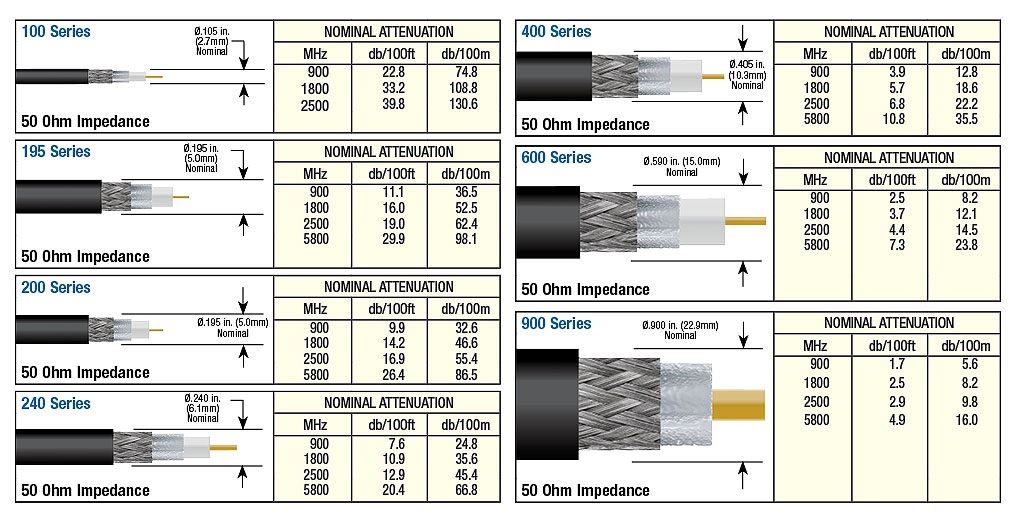
It may seem counterintuitive that a wireless network would need cables, but it’s true. The components of a wireless network, such as access points, amplifiers and antennas, all need cables to communicate with one another. Antenna cables introduces signal loss in the antenna system for both the transmitter and receiver. In order to reduce this signal loss, you need to either minimize the cable length, if you can, and use only low-loss or ultra-low-loss coax cable s in order to connect access points and amps to antennas.
Coaxial cable is one of the oldest signal cabling types and is still used today because it is robust and very good at carrying a signals over long distances. The term coaxial comes from the inner conductor and the outer shield sharing a geometric axis. The term "low-loss" refers to the cable's relative low-attenuation (loss) over distance. The general rule is that the thicker the cable is, the less loss of signal there will be over the length of the cable.
RG-style cables were the original standard for coaxial cable, but the signal in these cables degrades over longer distances. This isn’t an issue when covering short distances, but in a wireless application it is critical to maintain the signal strength throughout the cable and until it is sent out through the antenna. Thus, low-loss coaxial cable was created offering lower attenuation and better shielding, a much better solution for wireless systems than RG-style cables. Low-loss coaxial cables also use solid center conductors which provide lower attenuation than the stranded conductors found in some types of RG-style coax cables. It's good practice to use a Fluke toner testing kit to check for continuity and short circuits on coaxial cables.
Low-loss coaxial cables are ideal for use in WLAN, Cellular, PCS, ISM and many other wireless communications applications. They are offered in multiple sizes with a three-digit “series” number designating the thickness of the cable and the low-loss properties. For example, 400-series low-loss coax is thicker and has less loss than 200-series, and 200-series is thicker and has less loss than 100-series. While the thicker cable will provide less loss, it will also be heavier and less flexible, though ultra-flex versions of the thicker series cables do offer more flexibility. If you have more questions such as what is coaxial cable then visit our other blog post explaining this.


